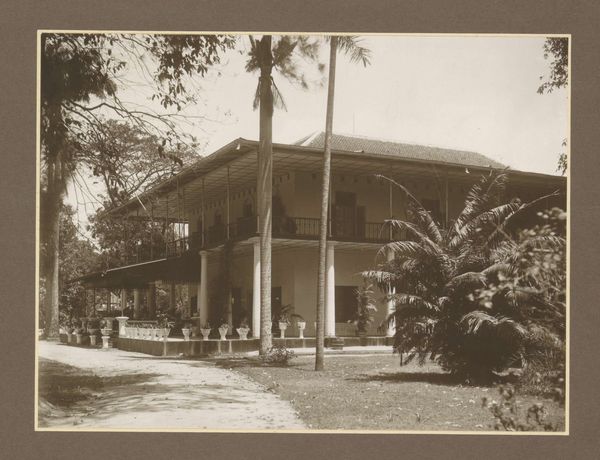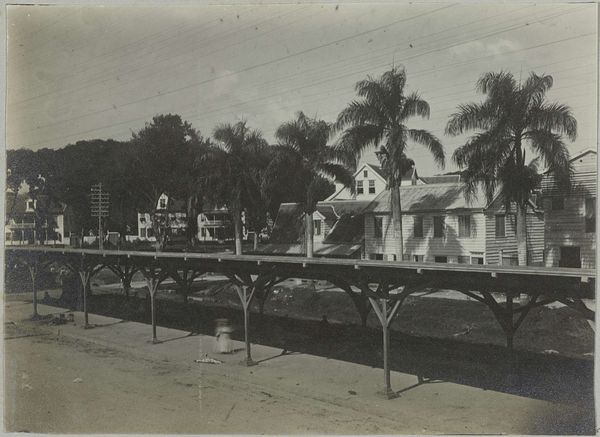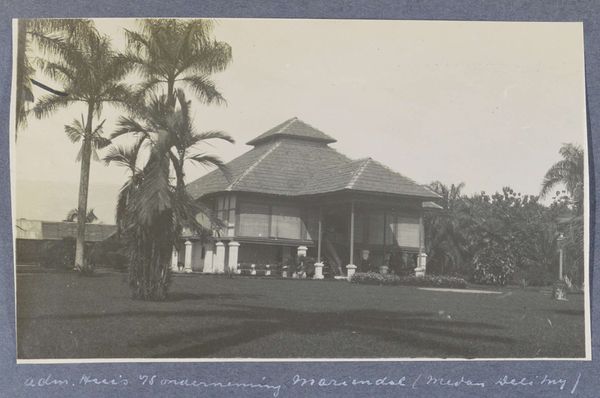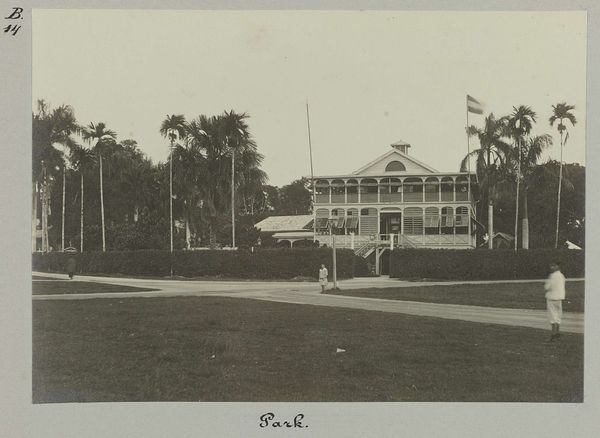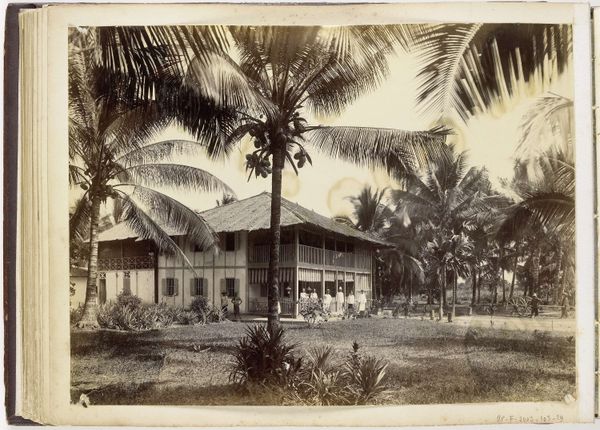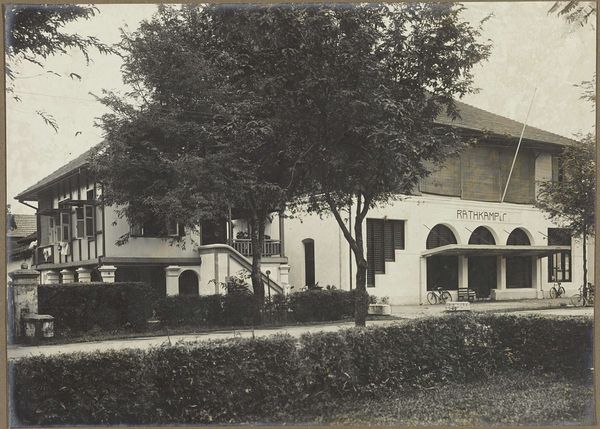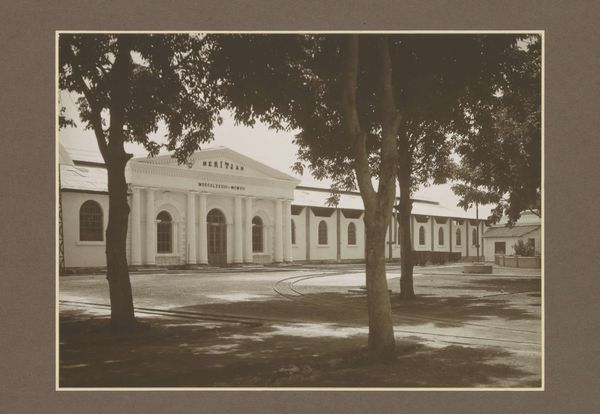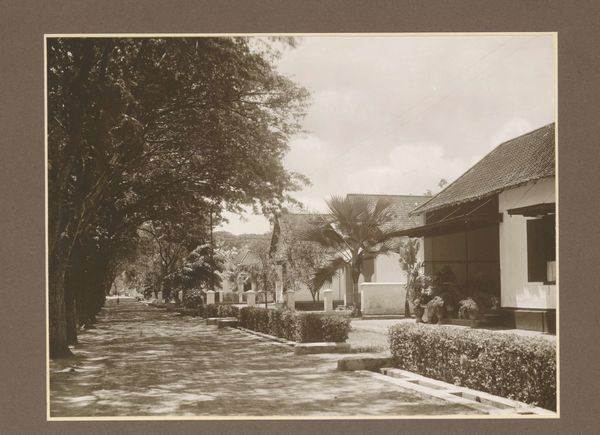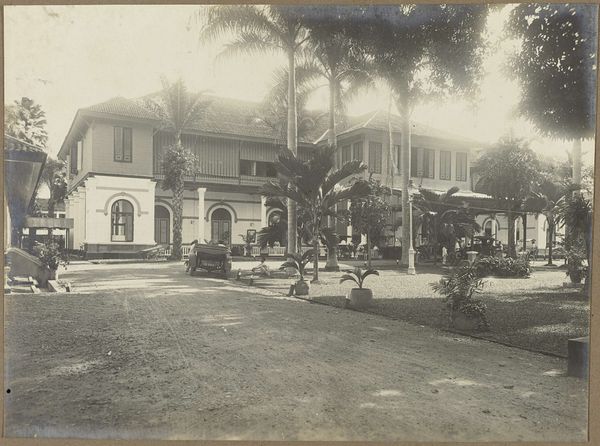
Groot huis op suikeronderneming Nieuw Tersana, Cheribon, voormalig Nederlands-Indië c. 1890 - 1911
0:00
0:00
print, photography, architecture
#
black and white photography
# print
#
asian-art
#
landscape
#
photography
#
monochrome photography
#
architecture
Dimensions: height 170 mm, width 227 mm
Copyright: Rijks Museum: Open Domain
Curator: What we're looking at is a black and white photograph, likely taken between 1890 and 1911. The image, by Onnes Kurkdjian, is titled "Groot huis op suikeronderneming Nieuw Tersana, Cheribon, voormalig Nederlands-Indië," which translates to "Large house on the New Tersana sugar plantation, Cheribon, former Dutch East Indies." Editor: It projects such a rigid colonial image. The meticulously kept lawn, the precisely aligned palm trees – it evokes a sense of imposed order and a certain power dynamic, don't you think? Curator: Precisely. Photography of this era, particularly in colonial contexts, served as a tool for documenting and, in many ways, legitimizing the presence and activities of the colonizers. This photograph is less a neutral recording and more a carefully constructed representation of control and prosperity. The house itself, its architecture—how would you interpret it? Editor: The architecture feels like a hybrid – a blend of European colonial style adapted to the local climate. The wide veranda, for example, is both a status symbol and a practical design element for dealing with the tropical heat. What resonates with me is the potential unseen narrative held in this place; its function represents the impact of colonial rule on indigenous communities. Curator: The location, Cheribon, now Cirebon in Indonesia, was a significant port and agricultural region during the Dutch East Indies period. The sugar plantations, like the one depicted here, were central to the colonial economy. These estates were symbols of colonial power and exploitation, where local labor was often forced. You can sense how places like this also are important when looking at Asian Art during this period. Editor: It’s essential to remember the human cost. While the photograph emphasizes the grandeur of the house and the seemingly peaceful landscape, it's silent about the labor and social inequalities that made it possible. The visual order stands as an assertion of dominion over people and land. This house doesn't solely represent beauty or wealth but a history laden with the burden of exploitation. Curator: And what do you make of the way the photograph renders light and shadow, creating strong tonal contrast and depth within the space? The clarity and tonal control seem indicative of well-honed photographic processes of the era. Editor: Considering the image overall, one feels this controlled vision creates a kind of ghost, an aesthetic achievement rendered stark by historical realities. A monument to what vanished when this old order started to recede. Curator: Indeed, it leaves one pondering the enduring visual and symbolic language of colonialism – how it continues to shape our understanding of history and cultural identity.
Comments
No comments
Be the first to comment and join the conversation on the ultimate creative platform.
